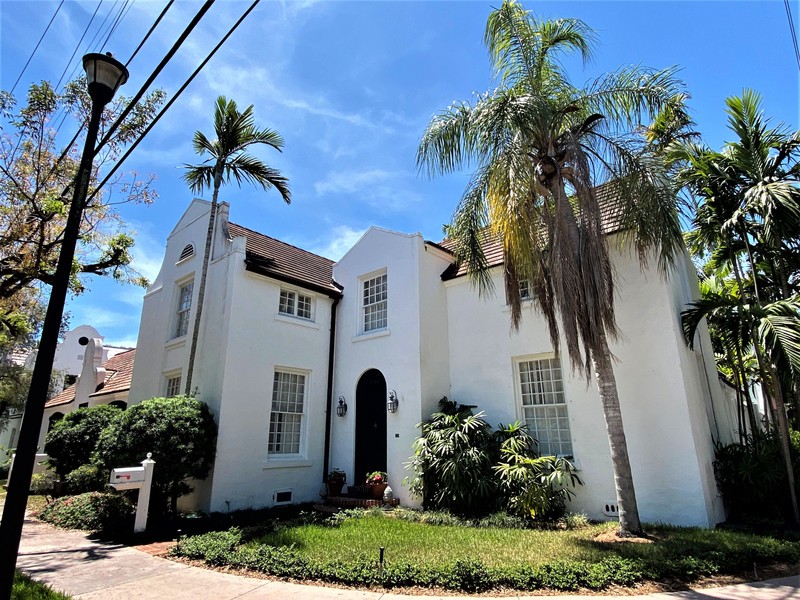Dutch South African Village
Introduction
Text-to-speech Audio
Dutch South African homes date from 1925 and feature distinctive gabled and dormered roofs. Well-known Palm Beach Architect Marion Sims Wyeth designed the homes to resemble the farmhouses built by Dutch colonists (known as Boers) who settled in South Africa in the 1600s. The homes are located off Le Jeune Road and Maya Street.
Images
A home in the Dutch South African Village

Backstory and Context
Text-to-speech Audio
A Dutch East India Compound was also planned (but never built). Four of the homes are part of a compound design, which tied together individual properties with a surrounding wall. The fifth home stands alone. Architectural elements include spiral chimneys, high domed arches, scrollwork, and steeply pitched roofs. Architect Wyeth also designed plans for Persian and Persian Canal Villages that were never built. Wyeth was well-known for his work with Addison Mizner in the development of Palm Beach and Boca Raton.
Other planned but never built Villages were African Bazaar, Japanese, Mexican Hacienda, Neopolitan Baroque, Tangier, and Venetian Town/Canal. Fortunately, today we can still see homes in the Chinese Compound, Dutch South African, Florida Pioneer (Colonial), French City, French Country, French Normandy, and Italian Country/Venetian Villages.
Sources
Fallon, Maria Rosa Higgins. "The Seven Villages." Coral Gables News (Coral Gables) October 29th, 2015.
Villages, Accessed April 10th, 2021.
https://www.coralgables.com/villages.
Historic Coral Gables.
Edition First. Self-Guided Tour. Coral Gables, FL. Junior League of Miami,
1986.
Uguccioni, Ellen J. Millas, Aristides J. Coral Gables, Miami Riviera, An
Architectural Guide. Edition First. Miami, FL. Dade Heritage Trust,
2003.
KFBuchsbaum
